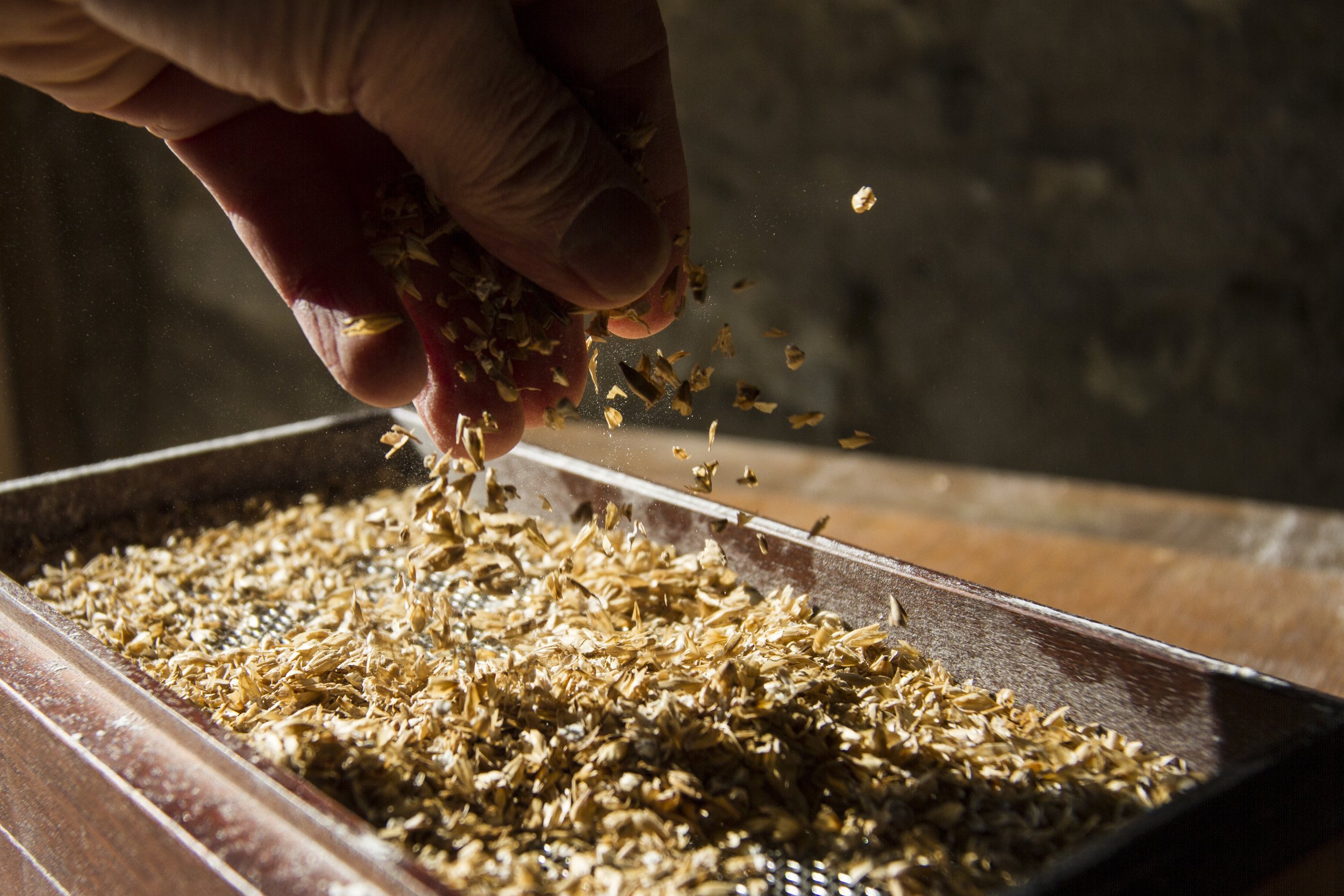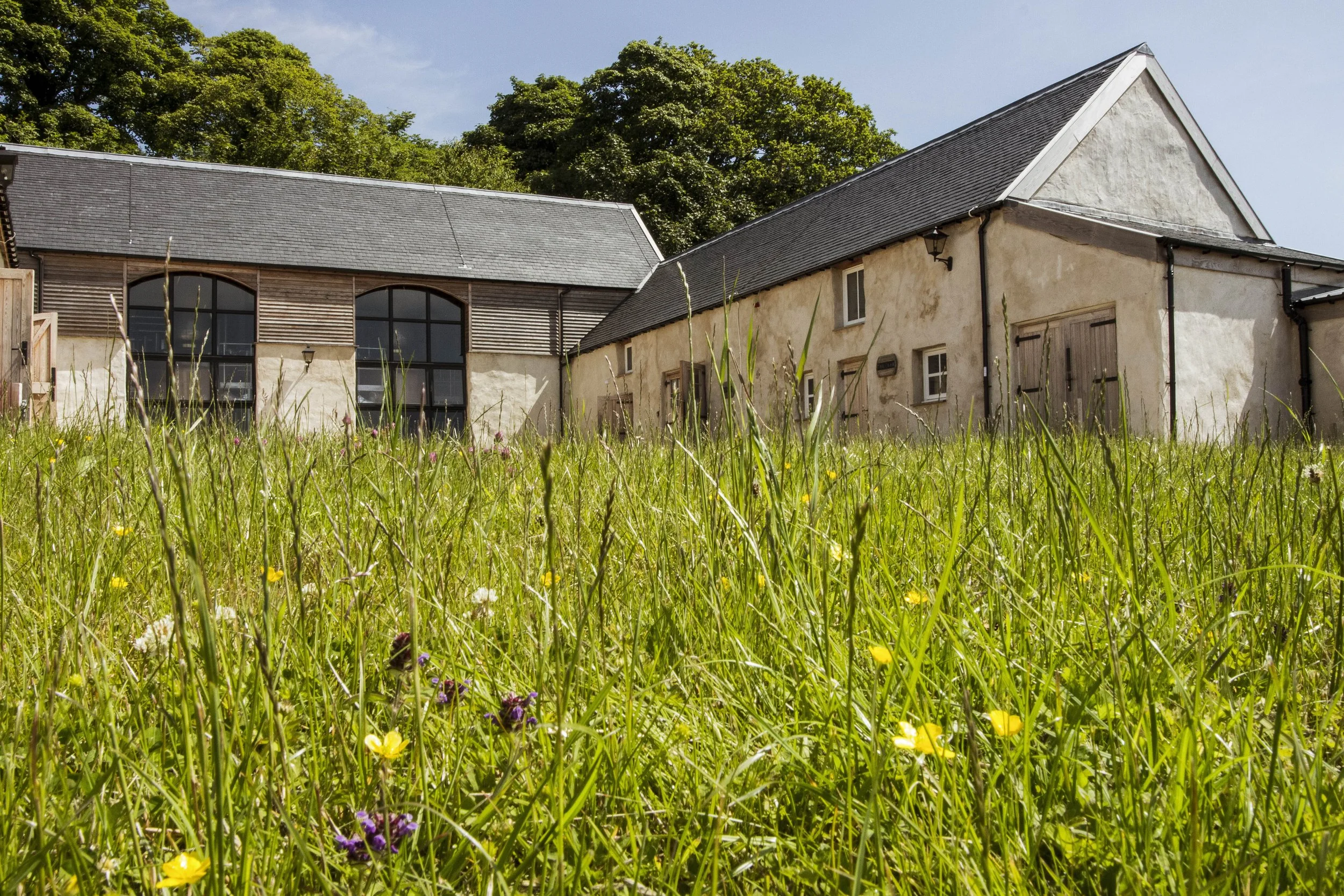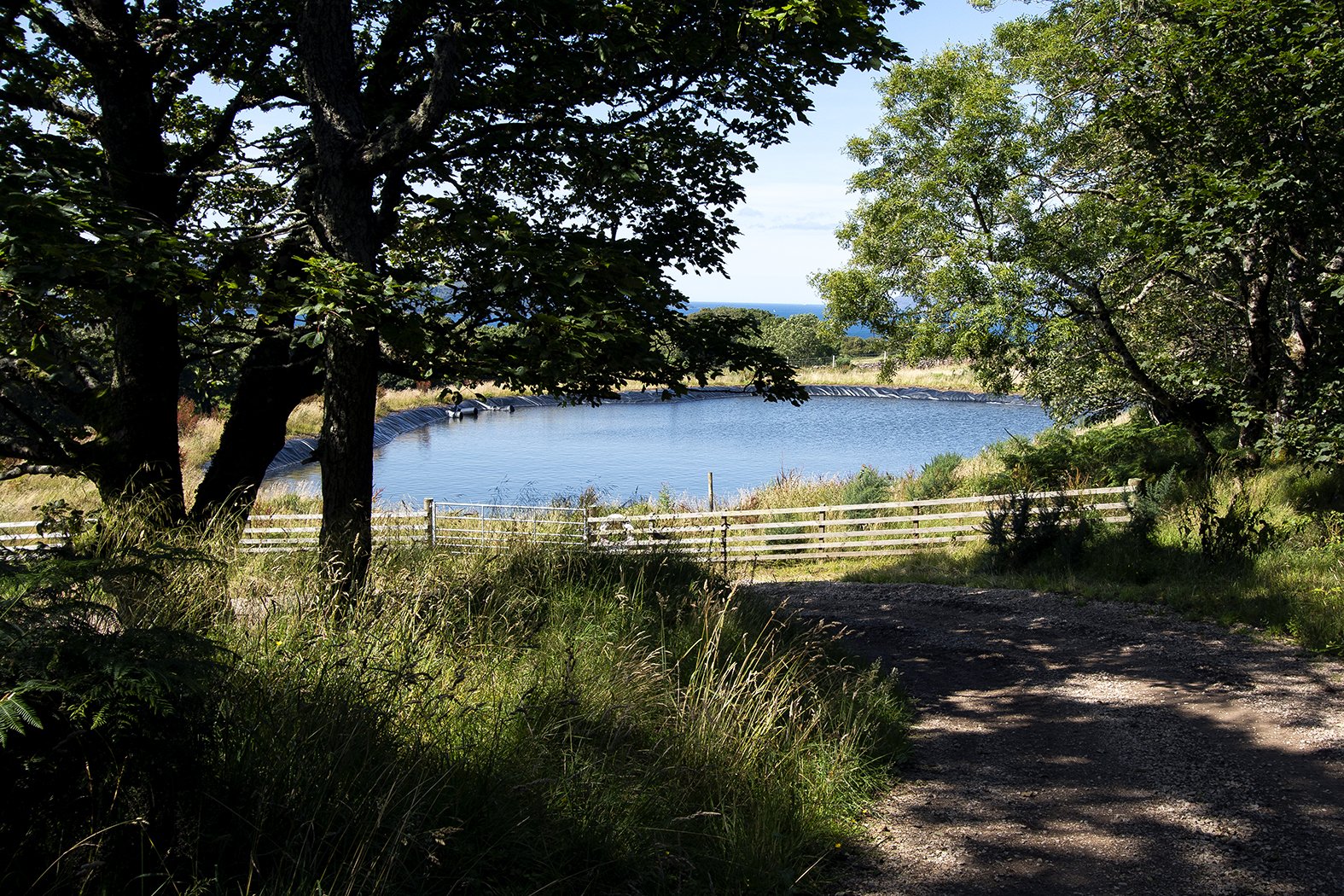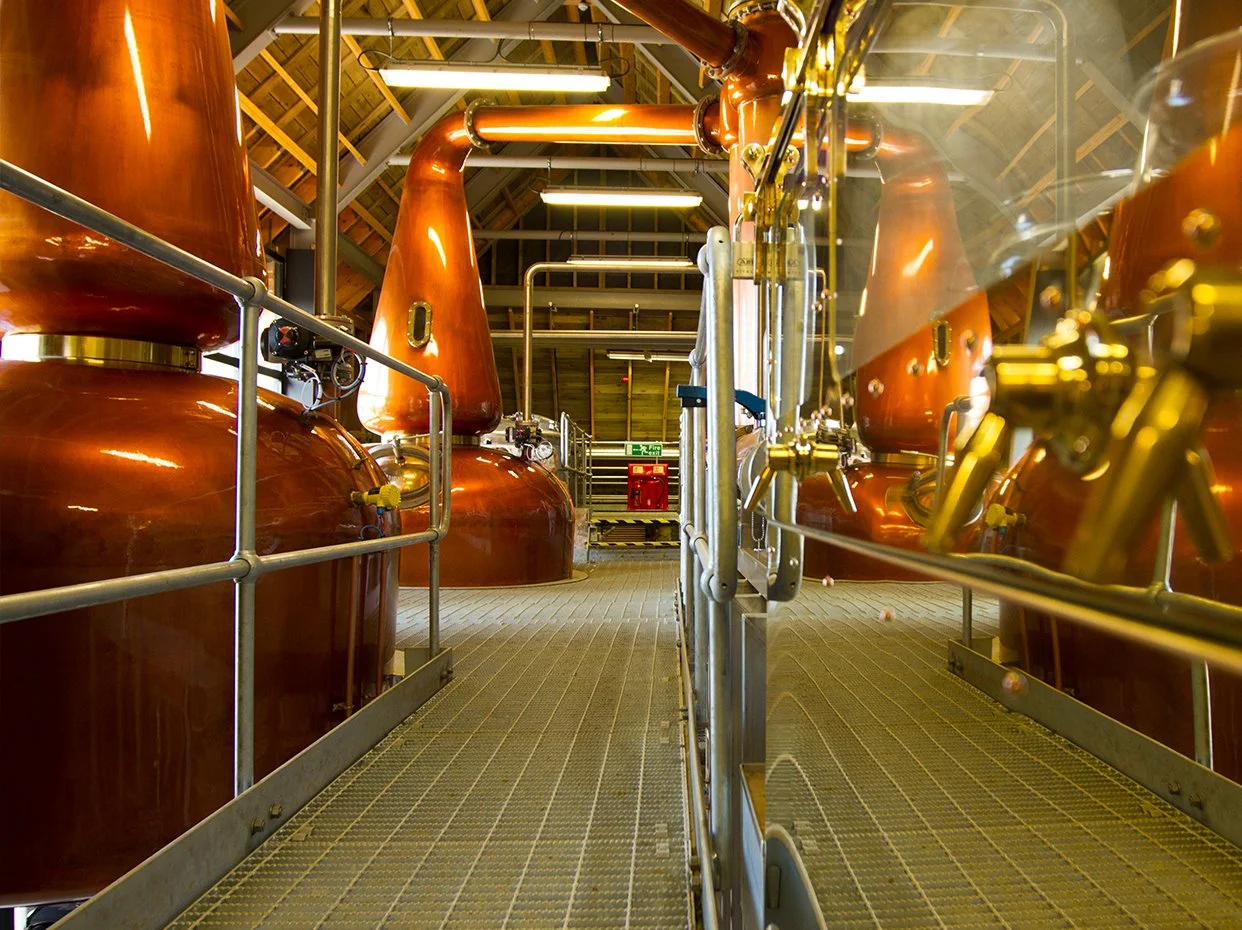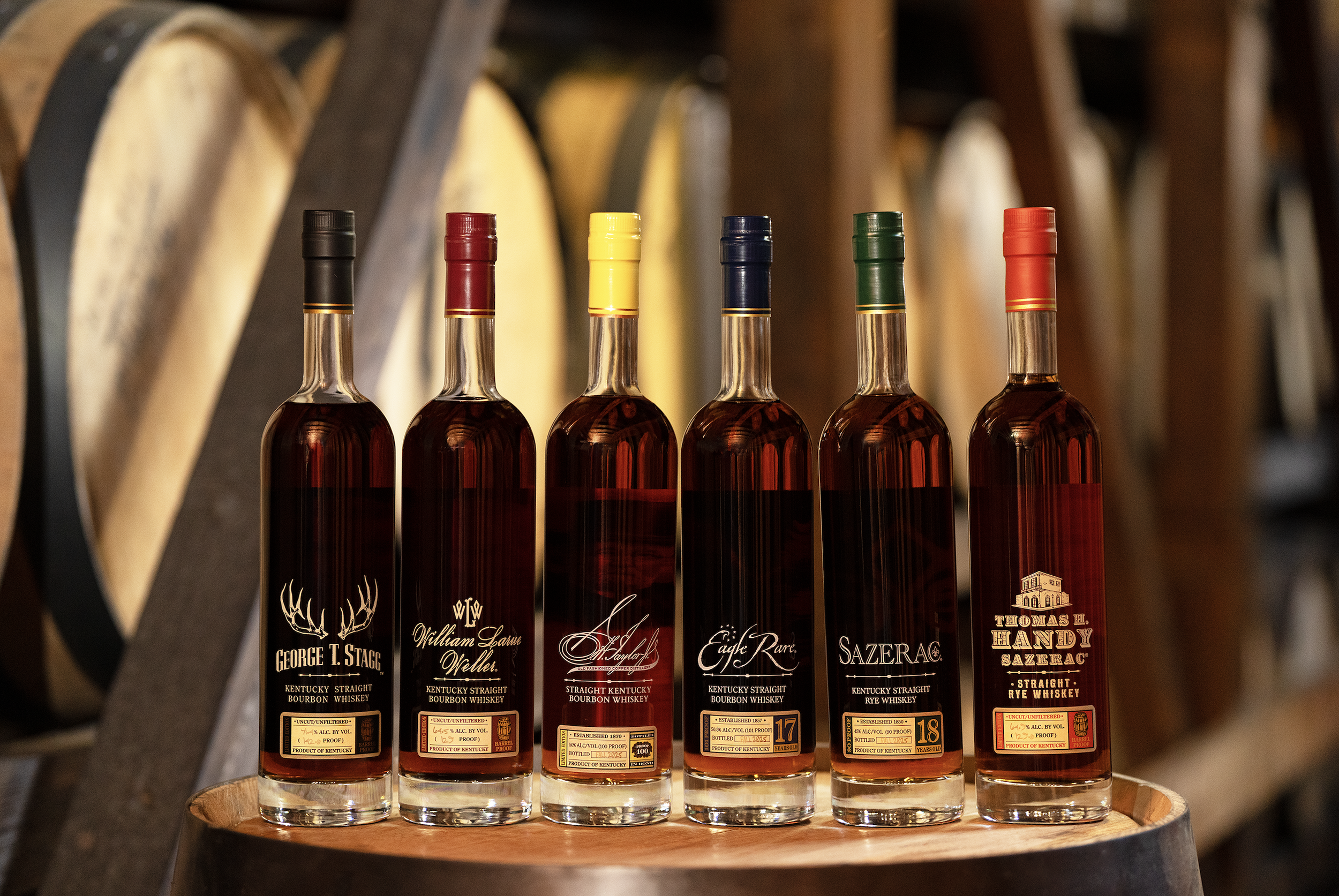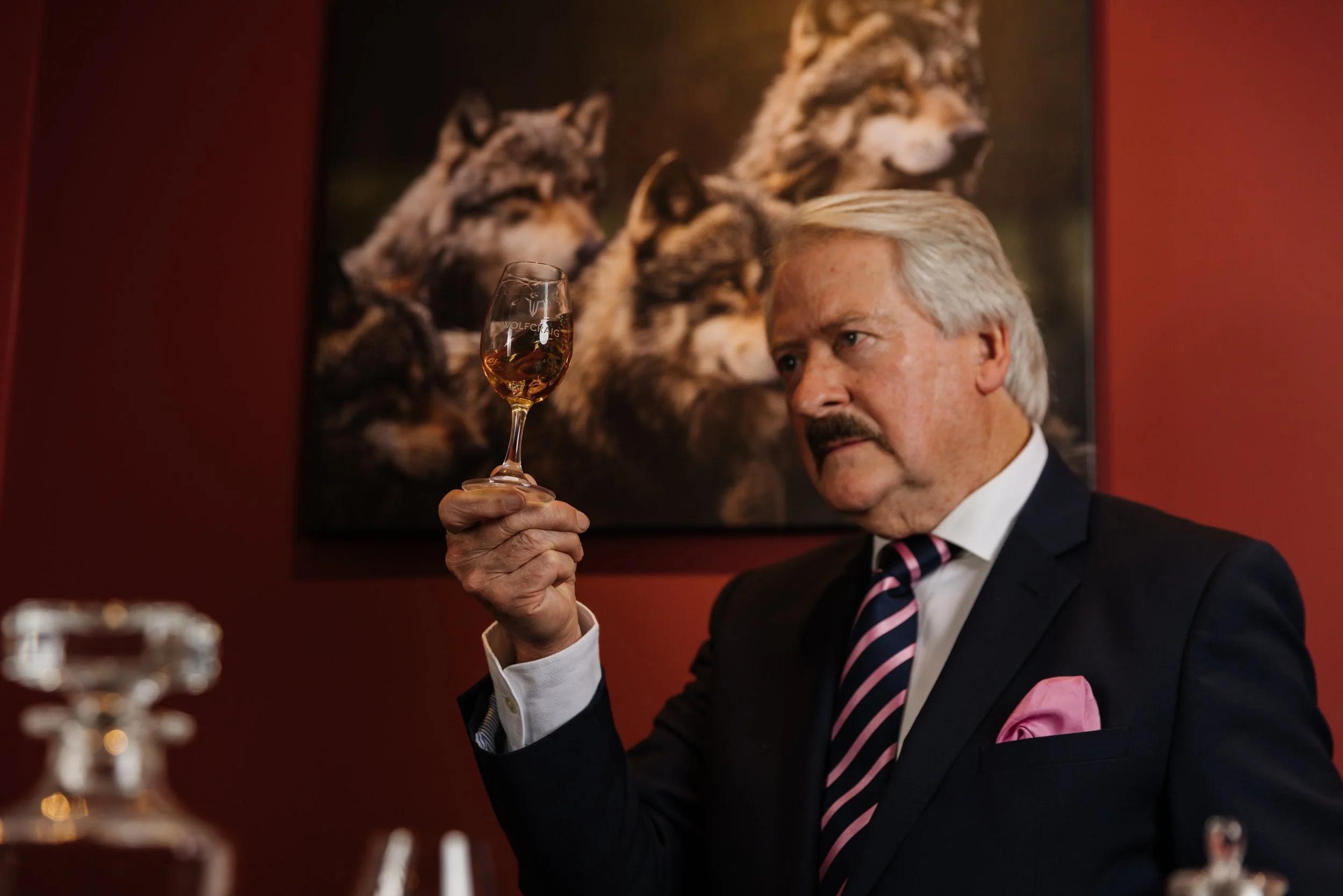My eco manifesto for future-proofing whisky
Nc’nean distillery, with Mull in the background
Nc’nean makes exceptional whisky. It also has a net zero carbon footprint and revolutionary methods of production. With eco credentials like this, who better to lay out a vision for a 100% sustainable industry than its boss, Annabel Thomas?
In the small hamlet of Drimnin, on the Morvern peninsula on the west coast of Scotland, my parents own and run a farm. On this land, overlooking the colourful patchwork of houses in Tobermory on Mull, was a beautiful farm steading, slightly crumbling and not really fit for modern farming with its tractors and trailers.
Originally a family dream to create a distillery in these buildings, I took some time off from my previous job as a strategy consultant in London and wrote the first version of the business plan. This took me to Islay where I was struck by the industry’s focus on tradition, and a distinct lack of focus on sustainability or other possibilities. Coming away, I had a vision for a distillery that could pioneer sustainable production, and that as a young, independent company, could be more uninhibited in its approach. After some false starts, it became clear this was not going to happen overnight, and I left my job to focus on it full time, thinking ‘when am I going to get the chance to start a distillery again’?
Annabel foraging at Nc’Nean
We finally started production in 2017, naming the distillery Nc’nean after the ancient Gaelic goddess, Neachneohain, who was known as a protector of nature and for walking her own path. Supported by a team of now ten people at the distillery, some of whom grew up in the area, some of whom moved there, and eight people further afield, we are all united by our desire to make the industry more sustainable, as quickly as possible.
It’s easy enough to bandy about the term sustainability, it’s a buzz word, but what are the obstacles to achieving it across a global business that is growing rapidly? How do we marry micro with macro? Make money - this is a business - and yet enact real change?
The reality is that whisky is a luxury, and I believe that creates additional responsibility for the industry to tackle climate change. Certainly it is incumbent on any new business today to ensure their set up is sustainable from day one, and for global corporations to reinvest their profits to drive change.
Whisky uses an immense amount of energy in the distillation process, that much is obvious when you tour a distillery and see the hot water going into the mash tun and feel the heat coming off the stills. But it also impacts farmland through the growing of barley or other grains, uses significant amounts of water and creates huge amounts of waste both from the distillation process and ancillaries like packaging and tourism.
What do we need to do to create a sustainable future for the whisky industry? Here is my five-point proposal…
Organic barley field
1. Get onboard with carbon accounting
Measure your impact. Know your data. You can’t change what you don’t know, and if you don’t measure it, you don’t know where to focus.
In 2021, Nc’nean’s first sustainability report explained that Nc’nean was net zero for our own operations (i.e. the distillery itself). This is driven primarily by the use of local biomass as a fuel source (as opposed to oil) to fire our stills and to provide heating for our offices and bar. Our distillers are also woodchippers; having felled and dried the locally-sourced timber naturally for a year, we chip it on site and feed it into our boiler, ultimately to create steam. We replant every tree we harvest and the cycle continues. All good progress, but the report also showed that we have significant emissions to tackle in ‘Scope 3’ (anything that happens off site, basically), and this is where the data is so essential.
Woodchip from timber felled on the estate is used for creating biomass at Nc’nean
One day, I hope carbon accounting will be like financial accounting – shown on invoices, transparent, discussed at board level. We are not there yet. But that doesn’t mean it can’t be done. It’s possible to outsource this to a consulting company or similar but ideally it should be done in house – this gives a company complete control and internalises the insights. We also need to set targets – what will be changed first and what results will come out of it? This could be as simple as a % reduction target each year, or it could be specific initiatives. But either way, the ‘how’ is important, as there are no easy or cheap solutions.
Organic barley grist
2. Show more bottle when it comes to packaging
For whisky, the first initiatives should be around packaging. It’s relatively easy to change (at least easier than overhauling the fuel source of a distillery) and there should be quick wins – lightweight glass, make gift boxes optional, and a shift to locally sourced products with a higher percent of recycled material. For me, the holy grail is a circular economy, rather than just a focus on recycling (though the fact there are still pieces of packaging out there that are not 100% recyclable is completely unjustifiable). There are already some excellent examples of this happening in the industry, from water companies across Europe taking bottles back from bars and restaurants, to the growth of beer growlers in the UK (the reusable containers sold by craft beer shops and tap rooms).
A first step towards this in the Scotch industry would be to allow bottles of single malt to be filled outside of Scotland. To be able to send bulk liquid to, say, England, and have people bring their bottles back to a relatively local point for refilling would make so much sense. This already exists for the bar industry in the form of refillable ‘totes’, but single malt whiskies are forbidden to pursue this course by a law that says it may only be bottled in Scotland.
Consumers are completely on board with this, conceptually. The East London Liquor Company allows you to bring any 70cl bottle back its the distillery to be filled. At Nc’nean we’ve had people visiting us from as far afield as Germany bringing their bottles back to be refilled. But clearly not every single malt drinker is in a position to do the same.
Aside from this big legislative change required, I’d call on all companies, especially the bigger ones, to think seriously about upping the recycled content of their packaging – gift tubes, bottles, outer cases - and for governments to prioritise the processing of waste glass into reusable (re-meltable) material. This was, perhaps, one of the aims of the lamentable deposit return scheme, recently postponed by the Scottish government. Laudable in its aspirations, but so poorly planned, and with a seemingly childish wish to ‘get there first’ before the rest of the UK, that it has become completely unimplementable.
Outside Nc’nean distillery
3. Farm locally, make every grain count
By the time you are sitting down to enjoy a bottle of whisky at home, the barley fields that made it possible are unlikely to be on your mind, but their impact is incontestable. Whisky is completely reliant on grain farming, and barley in particular, to make malt whisky.
The detrimental effect of years of intensive, conventional agriculture on soil, carbon emissions, water quality and biodiversity is devastating. We’re losing insect populations, pollinators, and soils are so degraded they can only be productive with the addition of synthetic fertilisers. Sadly, that is the way much of our barley is still grown today.
By working closely with farmers the whisky industry can change this. Shortening the lines of communication between whisky-maker and farmer is a first step – look out for makers where they prioritise that relationship and quality. Bruichladdich and Kilchoman have forged close links with farmers on Islay.
At Nc’nean, we have switched from an English maltings to one in Inverness, reducing our carbon footprint for transport significantly; and where we used to work with 10 Scottish farms, we now only buy organic barley from two, allowing us to understand their carbon footprint more accurately, and hopefully pave the way for closer cooperation.
Natural water cooling pond at Nc’nean
4. Don’t waste a drop (or any of that draff)
The old adage Waste Not, Want Not could have been coined for the whisky industry. Distillery waste can be broadly defined as draff (the solids leftover from the malted barley), pot ale and spent lees (the liquid left in the stills), packaging waste and spent barrels. It should be seen as a resource, not something to be disposed of. Encouragingly, some of the bigger players are already taking progressive steps, using anaerobic digesters to turn their core distillery waste into energy.
This technology is not yet available at an economical cost to smaller distilleries, but that doesn’t mean we can’t get creative with our waste cardboard, ‘wonky’ bottles or even the carbon dioxide released during the fermentation process. At Nc’nean we make keyrings out of our rejected corks and raise money for charity by selling our wonky bottles; others are fashioning drinks coasters out of draff. Very nifty. We feed ours to the cows so they can help in our zero waste mission. The possibilities are endless.
We also need to wade into the water issue. Perhaps not something you’d think we’d be worrying about on the rainy west coast of Scotland, but some of the rivers are becoming dangerously low and the silent seasons (when the distilleries have to stop operating in summer) are getting longer.
At Nc’nean, we don’t have access to a river, but rejected the standard alternative of a cooling tower – to avoid the use of chemicals and the additional energy consumption – and instead created a very simple, large pond. We put the warm water from the condensers into one end and draw cooled water from the other. All it takes is a single pump and the pond is topped up by the rainwater that comes off the warehouses.
Renewably powered stills, Nc’nean
5. Bringing it all back home
And finally, we must bring everything closer to home and prioritise the selection of our suppliers not just on cost, but on broader criteria – transport miles, carbon emissions, fair work policies, transparency. One thing that has become enormously clear to me since Nc’nean became a B Corp (that’s a company that has voluntarily met the highest standards for social and environmental performance) is that we can have an influence far beyond our immediate operations.
Cows on Nc’nean play their part in the zero waste mission by eating the draff
B Corp encourages companies to screen all suppliers on the kind of metrics listed above, and this has a far reaching impact. Even just repeatedly putting the question to your suppliers, ‘Have you done a carbon footprint for your company?’ will have an impact – and the more people that ask, the better.
As the consumer-facing end of the supply chain, whisky companies are close to what the customer cares about, but our supply chains are not always. We can transmit this pressure more widely and have greater impact, more quickly, if we ask, and make choices, based on a broader set of criteria.
I don’t pretend to have all the answers. But whisky needs a concerted and collective effort to impart real and lasting change on a global scale. Working together, I believe we can and must make this happen.
Annabel Thomas is the founder and CEO of Nc’nean distillery






